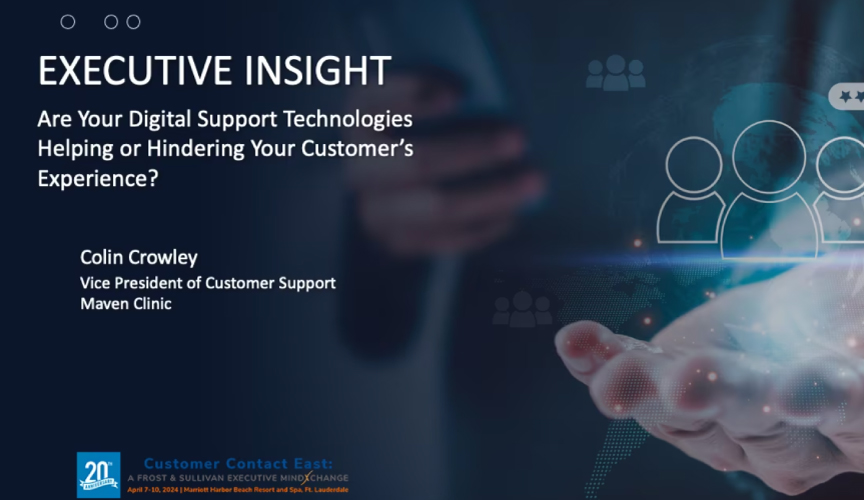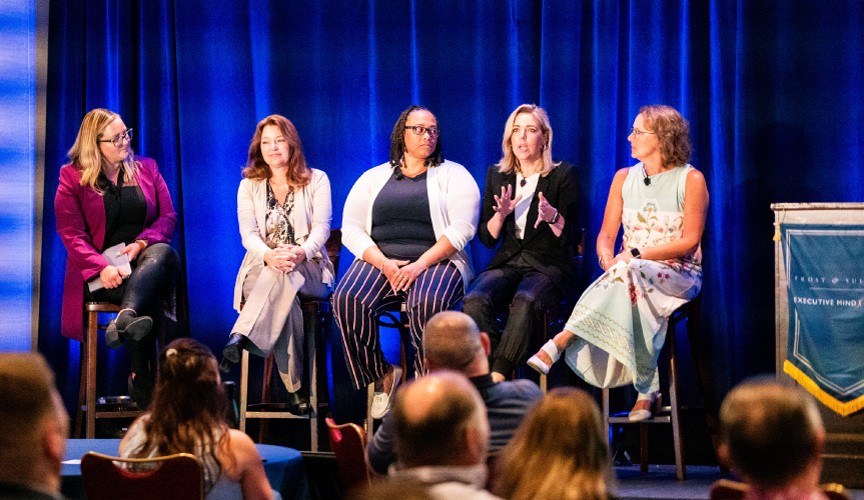Frost & Sullivan recently posed a few timely questions to customer experience industry expert Vinod Varma, who will be leading a session, Rebooting Your CX Initiatives: Advancing from Insights, to Organizational Strategy, at Customer Contact VIRTUAL: A Frost & Sullivan Executive MindXchange, February 2-4, 2021.
We asked Vinod about his experiences and key learnings leading enterprise product strategy and customer care initiatives at American Express for over twenty years, and, more recently, at the UnitedHealth Group. Vinod shared that serendipity and technology played big roles in his career, and emphasized important trends like offering customers a true omnichannel experience and creating economies of scale via integrated desktop solutions. He also offered a bit of advice about how to lead contact centers through and beyond current circumstances, hinting at what the future will likely hold.
What drew you to the customer contact industry? Was this the career path you planned or were there twists along the way?
It was serendipity. In 2010, I was asked by Amex Global Business Travel to develop a new Premium service offer for our VIP customers. That opportunity gave me a 360 degree view of how contact centers work. I enjoyed the work involved in developing an end to end customer solution and we successfully launched FIRST, a VIP travel service offer for top travelers. This then led me to a new role to streamline after hours service and emergency travel support on a global basis. Eventually, I was asked to lead a large contact center service for our top twenty customers. Since then, I have had direct or indirect opportunity to influence the contact center customer experience. I continue to have active association with the industry through my role at United Healthcare.
What do you think is the most important trend in the industry today?
Technology is definitely influencing many facets of the industry. Traditional call centers are evolving into omnichannel contact centers. Customers are demanding new channels to engage with their service providers. Businesses are investing in digital to present new channel options. Significant volumes of contacts are moving from voice to digital channels like asynchronous messaging or chat. Voice services are beginning to utilize better speech recognition technology and improved Natural Language Processing (NPR) capabilities. Contact center AI capabilities now offer humanlike voice with high quality self-service bots, driving a much higher adoption rate. The agents are becoming more productive by utilizing smarter CRM capabilities with an integrated approach to application access. Agents can personalize the experience while improving efficiency through improved search features, guided workflows and next best action recommendations tailored to the caller they serve.
There are massive opportunities to create economies of scale using an integrated desktop. Finally, better voice to text capabilities and sophisticated survey and real time customer sentiment tracking capabilities are raising the bar on NPS. All of this creates opportunities in talent sourcing, talent retention and training solutions.
Where do you see the customer contact industry going in the next ten years?
Contact Centers will continue to dynamically evolve, thanks to technology. Customers will always have the need to contact an agent for help. However, basic to moderately complex transactions will begin to shift to self-service models through portals and mobile apps. More consumers will shift from synchronous channels like voice to asynchronous channels. Significant volume of interactions will be self-served by customers using sophisticated voice bots that sound like humans. Given the proliferation of Alexa and Google assistant, customers will become more comfortable interacting with humanlike voice bots.
Many industries will utilize their learnings from COVID-19 and permanently move to home- based contact centers. This will present new challenges in adhering to customer information privacy laws and accessing data from home offices. Customer surveys and feedback will become real-time and traditional post contact surveys will become less relevant. This will enable customer experience leaders to iterate and tailor products and services to meet the needs of the specific customer in very effective ways. The industry will continue to deliver exciting new products and services.
What is your best advice to customer contact and customer experience professionals now, in the current mainly virtual environment?
My advice is to focus on removing friction for the customers. Evolve from being a reactive contact center to becoming a proactive one. Eliminate the need for customers to call. Give customers options and avoid forcing them to choose a path. The biggest challenge for CC / CX professionals will be to evolve their services to cater to rapid change in customer needs driven by digitization in various industries. There will be pressure on the laggards to catch up. Stay curious and adopt a customer centric approach. It is no longer sufficient to have the traditional chops to run contact centers. The best ones will be focused on the customer experience across the customer’s journey.
Vinod Varma is currently responsible for leading enterprise level Omnichannel Product and Experience at UnitedHealthcare. He is passionate about driving large-scale transformation and has significant global experience – including leading customer care and customer experience initiatives at American Express – for more than twenty years.



